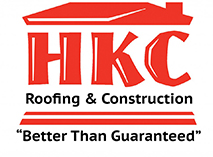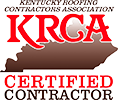Hiring a Roofer? Do the Research!
Installing a new roof is a major investment, and to make sure the job gets done right you need to find a quality contractor. Just because a contractor claims they can do the work quickly and cheaply doesn’t mean they’re the best choice. When looking for the right roofing contractor, a few questions and a little investigation will go a long way. Here are a few important questions you should ask before signing on the dotted line.
- Is this contractor established?
While you shouldn’t write off a roofing contractor just because they’re new to the business, knowing that a roofer has been in business for a number of decades is usually a good indicator that they are trusted by their clients.
- Seek references!
If you just ask the contractor for a list of references, you may get a cherry-picked list of their most satisfied customers. Instead, ask for the contact information of the contractor’s last three clients. The experiences of their recent clients will be a good indicator of what you can expect. Also, you should ask to speak to clients who had their roofs replaced three or more years prior, this will tell you about the long term quality of the work.
- Are they insured?
A good contractor should have commercial liability insurance to protect their customers from any unexpected events during construction. Ask the contractor to include a certificate of insurance when they submit their proposal and contact the insurance company to make sure the policy is still in force.
- What is their scope of work?
What’s the contractor’s scope of work? It’s in your best interest to find a roofing contractor that can offer a variety of roof options. If a contractor has experience with a verity of different roof types, you can be confident that they will suggest the best roof for your home, not just the roof they know how to build.
- Do they offer a warranty?
Does the roofing contractor offer an additional warranty? If so, how long does the warranty apply, and what does it cover? Remember that most reputable contractors offer workmanship guarantees that will cover issues caused by improper installation.
- Do they have a maintenance program?
Does the roofing company offer a preventative maintenance program? Regular inspection will extend the life of your roof by allowing you to fix potential issues before they require major renovations.
- Will subcontractors be hired?
While some roofing companies will handle the entire project, many depend on subcontractors to perform specific jobs. If the company does use subcontractors, ask for their contact information, certifications, and proof of insurance.
- Are the workers experienced?
Ask what kind of training the workers go through before they are allowed to work. Are the workers trained in OSHA safety procedures? Do the workers have experience in installing the style of roof you want? You only want skilled and experienced workers on your roof, not just to ensure quality work, but for safety and liability reasons as well.
- Is the contractor a safety liability?
Request a copy of the contractor’s safety records. A reputable contractor will not have a problem with providing you a copy of their EMR rating as well as recent OSHA logs. A contractor with a history of safety issues is a serious liability and should be avoided.
- Inspecting for Quality
Your roof will need to pass a number of regional safety codes, and it is likely that compliance inspectors will examine the project at various stages. You need to know that your contractor will have an expert on hand to ensure that all construction is up to code in order to avoid any costly changes.








